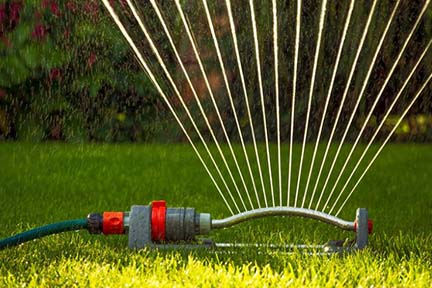
by orionontv | Jun 29, 2023 | ChatGPT
Your Ultimate Pre-Travel Checklist: Things to Do Before You Take a Trip
Author: ChatGPT
Introduction:
Planning a trip, especially when driving to your destination, requires careful preparation to ensure a smooth and enjoyable journey. Along with the usual travel considerations, you need to account for additional aspects specific to road trips. To help you stay organized and prepared, this article presents an extended pre-travel checklist that covers everything you need to do before you take a trip, including driving. Whether you’re heading to popular summer destinations in Michigan like Traverse City, Mackinac Island, or the beautiful beaches of Lake Michigan, this checklist will ensure that your road trip is memorable for all the right reasons.
- Research your destination:
Begin by researching your destination thoroughly, including the route you’ll be driving. Familiarize yourself with any road conditions, tolls, and potential construction or detours along the way. Additionally, research popular attractions, outdoor activities, and local events in destinations such as Traverse City, Mackinac Island, and the stunning beaches along Lake Michigan.
- Check your vehicle:
Ensure your vehicle is in good condition before hitting the road. Schedule a maintenance check-up or perform one yourself if you’re knowledgeable about car maintenance. Check the tires, brakes, fluid levels, lights, and wipers. Carry a spare tire, jack, and necessary tools for any emergencies.
- Plan your driving itinerary:
Create a detailed driving itinerary that includes your travel dates, planned rest stops, and estimated driving hours per day. Take into account your comfort, fuel stops, and any must-see attractions or detours along the way. Plan for breaks every few hours to stretch your legs and prevent fatigue.
- Pack an emergency roadside kit:
Prepare an emergency roadside kit that includes items such as jumper cables, a tire repair kit, a flashlight, a reflective warning triangle, basic tools, extra fluids, and a first aid kit. Familiarize yourself with how to use these tools and keep them easily accessible in your vehicle.
- Check your driving documents:
Ensure your driver’s license, vehicle registration, and insurance documents are up to date and easily accessible. If you’re traveling to a different country, research and obtain the necessary international driving permits and insurance coverage.
- Map out fuel and food stops:
Identify gas stations along your route to plan your refueling stops strategically. Consider using mobile apps or websites that provide real-time fuel prices and locations. Additionally, research restaurants or local food options along the way, or pack your own snacks and drinks for the journey.
- Familiarize yourself with traffic regulations:
Research the traffic laws and regulations of the areas you’ll be driving through, especially if you’re crossing borders. Be aware of speed limits, seat belt laws, cell phone usage restrictions, and any other specific rules applicable to the regions you’ll be traveling in.
- Prepare entertainment and navigation tools:
Load up your mobile device or GPS with maps, navigation apps, and any desired audio entertainment for the trip. Familiarize yourself with the features and ensure that you have a reliable charging cable or car charger.
- Secure your home and arrange for parking:
Take necessary steps to secure your home before leaving. Lock all doors and windows, set timers for lights, and ask a neighbor or friend to keep an eye on your property. If you’re leaving your car at home, arrange for secure parking or notify your neighbors to keep an eye on it.
- Share your driving plans:
Inform trusted family or friends about your driving plans, including your route and estimated arrival times. Regularly check in with them during your trip to provide updates on your progress and ensure your safety.
With this extended pre-travel checklist, including driving preparations, you can embark on your road trip confidently

by ChatGPT | Jun 7, 2023 | ChatGPT
Nurturing Your Michigan Lawn During Drought Conditions: Essential Care Tips
Drought conditions can pose significant challenges to maintaining a healthy and vibrant lawn, and
Michigan residents are no strangers to this concern. With its diverse climate and varying precipitation
patterns, the state often experiences dry spells that can impact the overall health of lawns and
landscapes. However, by adopting a proactive approach and implementing proper care techniques, you
can ensure your lawn stays resilient and thrives even during drought conditions. In this article, we will
explore essential tips for taking care of your lawn in Michigan when faced with limited water resources.
1. Water Efficiently
During drought conditions, the availability of water becomes limited, necessitating judicious water
usage. When watering your lawn, it's crucial to focus on efficiency and conservation. Here are a few key
practices to follow:
a. Water Deeply and Infrequently: Instead of frequent shallow watering, deeply soak your lawn once or
twice a week. This encourages deeper root growth and helps grass plants withstand drought stress.
b. Water Early or Late: Water your lawn during the early morning or late evening to minimize water loss
due to evaporation. Cooler temperatures and calmer winds during these times also allow for better
water absorption.
c. Use Irrigation Techniques: Install a sprinkler system with smart technology that adjusts watering
schedules based on weather conditions. Consider using drip irrigation for targeted and efficient
watering, reducing water waste.
2. Mow Appropriately
Proper mowing techniques play a vital role in maintaining a healthy lawn, especially during drought
conditions. Follow these guidelines to ensure your grass thrives:
a. Raise the Mowing Height: Set your mower blades to a higher position, allowing grass to shade its
roots and conserve moisture. Taller grass also has a larger leaf surface area for photosynthesis,
promoting overall lawn health.
b. Mow Regularly and Avoid Scalping: Maintain a regular mowing schedule, but avoid cutting more than
one-third of the grass height at a time. Scalping the lawn weakens it and exposes soil to excessive
evaporation.
3. Implement Smart Landscaping Practices
In addition to proper watering and mowing techniques, incorporating smart landscaping practices can
significantly reduce the impact of drought on your lawn:
a. Choose Drought-Tolerant Grass Varieties: Select grass species and cultivars that are well-suited to
Michigan's climate and have inherent drought resistance. Examples include Kentucky bluegrass, fine
fescue, and certain varieties of perennial ryegrass.
b. Improve Soil Health: Maintain healthy soil by aerating annually, which reduces compaction and
improves water penetration. Apply organic matter like compost or mulch to enhance soil structure and
water-holding capacity.
c. Limit Foot Traffic: During drought conditions, minimize excessive foot traffic on your lawn to prevent
compaction and turf damage. Encourage family members and guests to use designated paths or
walkways instead.
4. Embrace Natural Lawn Care Practices
By adopting environmentally friendly lawn care practices, you not only conserve water but also
contribute to a healthier ecosystem:
a. Practice Proper Fertilization: Use slow-release fertilizers that release nutrients gradually, promoting
consistent growth and reducing the need for excessive watering. Follow recommended application rates
and timings to avoid nutrient runoff.
b. Leave Grass Clippings: Instead of bagging grass clippings, let them decompose on the lawn. They act
as a natural mulch, retaining moisture, and providing essential nutrients to the soil.
c. Dethatch and Aerate: Regular dethatching and core aeration help reduce thatch buildup and improve
water infiltration, ensuring water reaches the grass roots effectively.
Taking care of your lawn in Michigan during drought conditions requires thoughtful planning and
responsible practices. By implementing water-efficient strategies, following appropriate mowing
techniques


